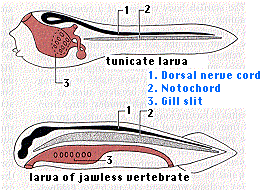Tripod1404
Active member
Hello Guys,
Did you know tunicates are more closely related to vertebrates than invertebrates. So if you have any in your tank, they are more closely related to fish than coral, shrimp, snail, worm or any other invert in the tank. Actually their larval forms look strikingly similar to fish larvae. Google tunicate larvea if you are interested.
They seem to be a very early branch of proto-vertebrates that appeared 541 to 485.4 million years ago.
Did you know tunicates are more closely related to vertebrates than invertebrates. So if you have any in your tank, they are more closely related to fish than coral, shrimp, snail, worm or any other invert in the tank. Actually their larval forms look strikingly similar to fish larvae. Google tunicate larvea if you are interested.
They seem to be a very early branch of proto-vertebrates that appeared 541 to 485.4 million years ago.

